#lovely scott weiland
Text
90’s grunge MTV Unplugged


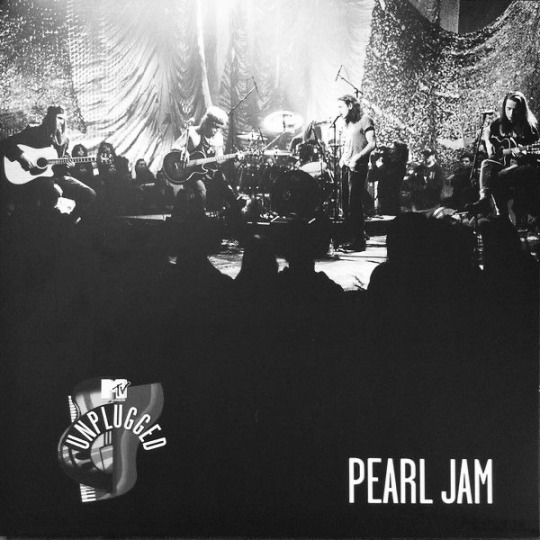
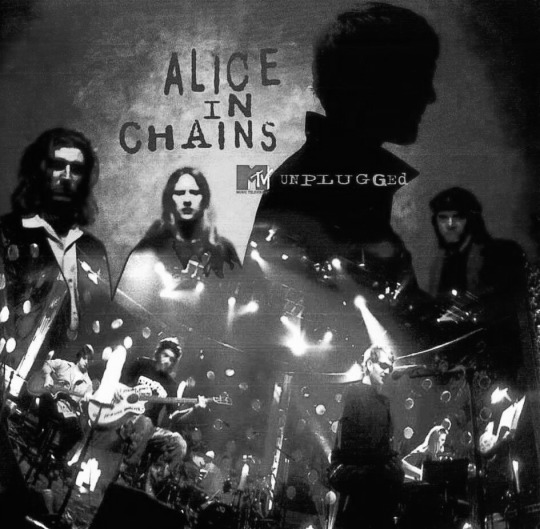
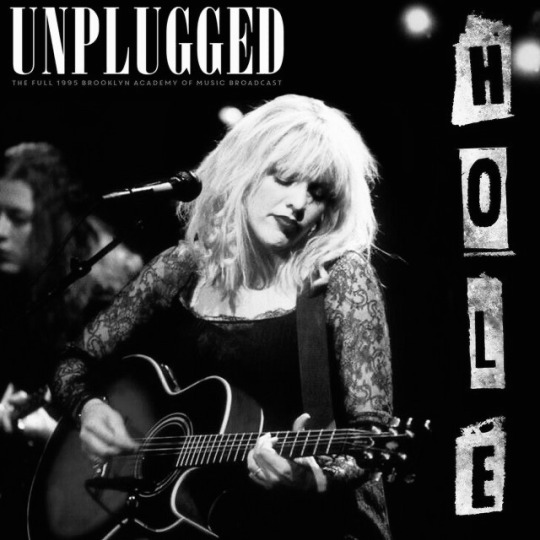
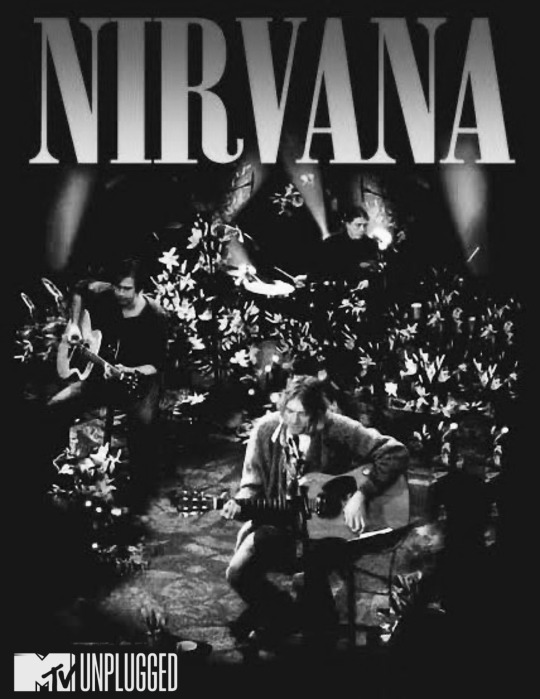
#grunge#music#mtv#mtv unplugged#hole#hole band#courtney love#nirvana#90s rock#kurt cobain#90s#alice in chains#layne staley#jerry cantrell#aic#pearl jam#eddie vedder#stp#stone temple pilots#scott weiland#alternative#90s grunge#music video#black and white
378 notes
·
View notes
Text
The making of Nobody Like You (Feat. Scott Weiland and Jonathan Davis) ; 1999
#limp bizkit#korn#stone temple pilots#nu metal#fred durst#jonathan davis#scott weiland#significant other#nobody like you#THIS SONG IS SO UNDERRATED PLS GIVE IT SOME LOVE
139 notes
·
View notes
Text
There are many stories in the world of rock music when the children of musicians continue the family tradition and become stage stars.

The new band BASTARDANE, which includes a drummer Castor Hetfield, son of METALLICA frontman James Hetfield
Bastardane is a wild mix of sludge metal, thrash metal, progressive and melodic rock. It consists of Jake Dallas (vocals and bass), Ethan Sirotsky (guitar) and Castor Hetfield (drums).

Slipknot
The cult metal band Slipknot featured 33-year-old drummer Jay Weinberg, the son of the famous Max Weinberg, who stood at the origins of the legendary E Street Band and worked with Bruce Springsteen. Weinberg Jr. was part of Slipknot from 2014 to 2023.
youtube
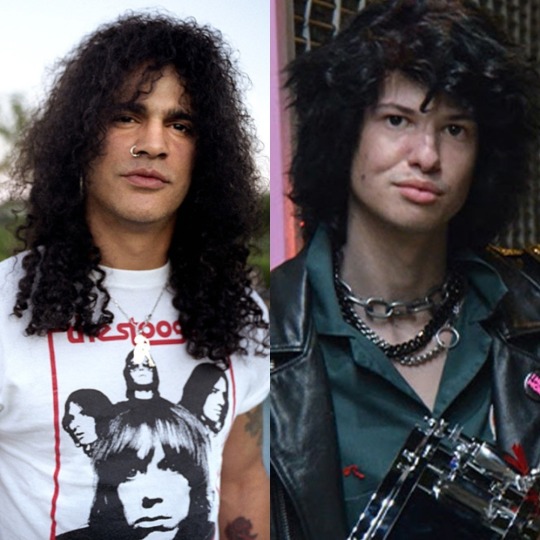
Suspect208
London Hudson, 21, the son of Guns N’ Roses guitarist Slash, is the drummer of the Los Angeles band Classless Act, as well as the founder of the band Suspect208.

"208 is my studio number, and it was here that Noah [Weiland] and I started composing music together. It was our refuge, where we could spend days and nights, composing, playing, sleeping. This was our secret place. And all the shit that's going on out there, it's very suspicious," London shared. And the word "suspect" just translates as "suspicious".
youtube

SWMRS
Joey Armstrong, the drummer of SWMRS, is the son of Green Day frontman Billy Joe Armstrong. The resemblance is striking!
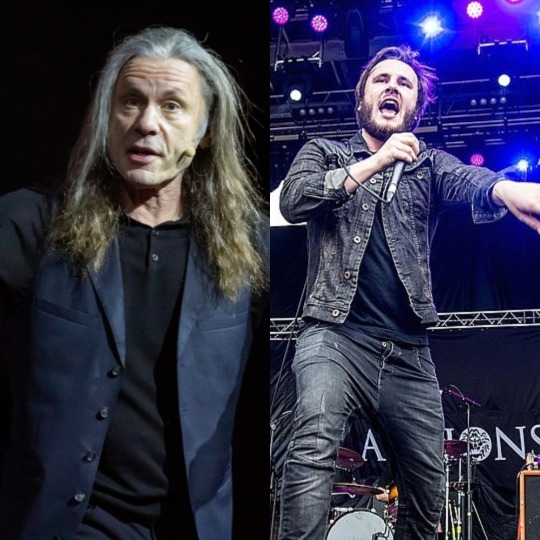
As Lions
As Lions frontman Austin Dickinson is the son of the famous Bruce Dickinson from Iron Maiden. Austin noted that the main task of As Lions is to create "the coolest and heaviest hard rock they are capable of."
youtube
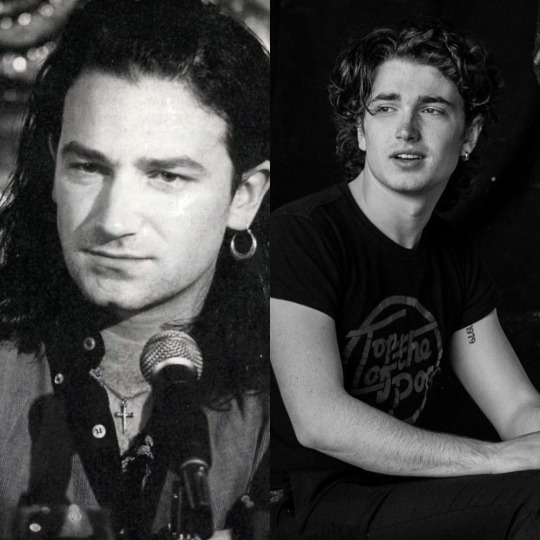
Inhaler
Elijah Hewson, vocalist and guitarist of Inhaler, is the son of U2 frontman Paul Hewson, better known as Bono. Hewson's parents hold the position that Elijah must achieve everything on his own. They don't help their son more than they need to: even when his hotel reservation was canceled during the band's first tour, his parents told him to sleep "on a park bench." Interestingly, the band's name, which translates as "inhaler", was given to the band because of Hewson's asthma.
youtube

The Wallflowers
54-year–old Jacob Dylan, the frontman of The Wallflowers, is the son of iconic singer and songwriter Bob Dylan. The Wallflowers became famous in 1996 after the release of the album "Bringing Down the Horse", which won two Grammy Awards, and the songs "One Spotlight" and "6th Avenue Heartache" became hits.
youtube

Motel 7
The Motel 7 line–up includes Anton Khabbaz and Dylan Jagger Lee, the son of Mötley Crüe drummer Tommy Lee and Pamela Anderson. The guys don't get hung up on any particular musical genre and experiment with different styles, combining them: from modern alt-pop and shades of hip-hop to the light sound of indie/alt-rock of the 2000s.
youtube

Taipei Houston
Taipei Houston is a new band featuring two sons of Metallica founder Lars Ulrich, Miles and Lane, who play drums and bass guitar respectively. After Lars heard them perform the classic Beatles' Eleanor Rigby, he said he was proud of his sons. In his opinion, none of the covers of this song were filled with such energy and madness of garage rock.
youtube
#Castor Hetfield#bastardane#james hetfield#sludge metal#thrash metal#progressive rock#melodic rock#slipknot#jay weinberg#max weinberg#Suspect208#Slash#scott weiland#robert trujillo#my music#music#music story#history music#spotify#musica#music love#rock#rock music#my spotify#rock photography#star children#Youtube
8 notes
·
View notes
Text
youtube
#Loving The Alien#Velvet Revolver#Scott Weiland#Slash#Saul Hudson#VR#Velvet Revolver Contraband#2004#2005#2000s music#2000s alt rock#2000s rock#music#2000s#2000s nostalgia#Youtube
1 note
·
View note
Text


INTERSTATE LOVE SONG - STONE TEMPLE PILOTS
#stone temple pilots#interstate love song#purple#scott weiland#rip scott weiland#90s rock#90s music#90s#alternative rock#rock alternativo#alternative music#alternative
5 notes
·
View notes
Text
Yesterday's purchase

#vinyls#l7#l7 band#jennifer finch#motley crue#dr feelgood#stone temple pilots#scott weiland#hole band#courtney love#90s grunge#seattle#los angeles
6 notes
·
View notes
Text
Could've, Should've Been Singles Capturing the Vulnerability and Versatility of Stone Temple Pilots
youtube
"And So I Know"
Just a beautiful track that defied everything you thought you knew about STP and left critics who railed against them mercilessly pegging them as no talent hacks, posers, and Pearl Jam copycats prior to their third record silenced with their collecgive bad takes on STP aging ever horribly. Tiny Music was without a doubt their most creative record. "And So I Know" is a testament to that, and generally speaking is a whole fucking vibe to its own that belongs in the score of a timeless film.
youtube
"Only Dying"
A previously unreleased track orginally slated to be their submission to "The Crow" Soundtrack, prior to the onstensibly accidental death of Brandon Lee on set during the filming.
With this in mind, due to the title and content hitting a bit too spookishly close to home, this track was tastefully put to the side and replaced fittingly with "Big Empty" from their recently released sophomore album.
The timing of which coincided with the release of the Soundtrack and was released as a two birds with one stone single instead. In hindsight, it was a great 2nd choice that is hard to separate from the film, and vice versa. But still it's a shame that "Only Dying" was left on the cutting room floor for a couple decades only to remain largely obscure after being quietly released a few years ago.
youtube
"Atlanta"
(Live Cut ft. Orchestra from the "Thank You" DVD)
Fortunately this is but one of several amazing live performances of this track out there in addition to those from their VH1 Storytellers set and Late Night Show appearances. The resolution of the dissonant tonal quality usied in the bridge which comes through in the outro as he begins to whistle is arguably the most beautiful moment in their entire discography.
youtube
Kitchenware & Candybars
(VH1 Storytellers, 2000-03-08)
"It’s about a painful and heartbreaking experience that I went through years ago in an old relationship where my old partner and I went through an abortion situation. It was a difficult choice for both of us at the time but thank God we were able to have that choice.”
youtube
"Too Cool Queenie"
This is one of those songs which was every bit as 'Goddamn, that's catchy' as "Interstate Love Song" and "Sour Girl", that makes you shake your head as for how and why it was not obviously prioritized as a single. It could and should have been one. It was built to live on the radio. As an interesting side note, it shares a legacy among the list of songs, presumed to be written about Courtney Love, which include:
Heart Shaped Box, I'll Stick Around, Starfuckers Inc., Professional Widow, Hollaback Girl, Bruise Violet, and a number of Smashing Pumpkins tunes. Among those speculated: "Tonight, Tonight", "Where Boys Fear To Tread,” and “Bodies,” potentially most of Siamese Dream. These are a few, there are others.
#stone temple pilots#stp#scott weiland#songwriting#artist#american canon#rock n roll#90's music#grunge#alternative rock#alt rock#90s alternative#90's alternative#rock#rocknroll#music#musicians#courtney love#kurt cobain#nirvana#dave grohl#nine inch nails#smashing pumpkins#billy corgan#writing#art#musician#rock gods
4 notes
·
View notes
Text
Stone Temple Pilots-Core 10/10
it's sexy. it's rock n roll.
#stone temple pilots#scott weiland#velvet revolver#grunge#90s music#rock#punk rock#cute#love#follow me#follow for follow#sexy#i follow back#latina#beauty#incubus#indie rock#90s rock#alternative rock#80s rock#rockman#pop rock#rock music#art rock#guitar
3 notes
·
View notes
Text
youtube
#counterculture#quote#writerslife#blogger#love#poetry#bucaramanga#literature#music#scott weiland#stone temple pilots#grunge#down#sunday girl#Youtube
0 notes
Note
have you done a poll on the best grunge/alternative singer yet, and if not could you?
Keeping this mostly to grunge/grunge-adjacent bands' lead vocalists (to prevent the poll from being HUGE) but as usual, leave your other favorites in the reblogs and replies!
57 notes
·
View notes
Text
Astrology Quick-List + Informal Survey: The Muses
Researched for my use, compiled and posted for public reference. Disclaimer is in my bio.
Below is a list of the asteroids for the nine muses and a very brief description of what they rule over or are associated with. Under the description I've listed some musicians with notable conjunctions to each respective asteroid. (If I listed every aspect, the post would be a million miles long, and other aspects are as a rule less relevant than tight conjunctions anyway, particularly for asteroids.)
KALLIOPE [22]
Kalliope is the eldest of the muses. She began as the goddess of eloquence, but since the arts were divided into separate domains, is the muse of epic poetry. Her name is translated, roughly, to “beautiful-voiced”.
A Few Musicians with Notable Kalliope Conjunctions: Anais Mitchell [Sun, Mars, Descendant], Judy Garland [Sun], Peter Gabriel [Moon], Vince Neil [Mercury, Vesta, Medium Coeli], Fiona Apple [Venus, Saturn], Mick Jagger [Venus], Jim Morrison [Venus], Hozier [Venus], Carlos Santana [Venus, Terpsichore], Sandra [Venus, Ceres, Vesta], Alice Cooper [Mars], Scott Weiland [Jupiter], Billie Joe Armstrong [Saturn, Pallas, Urania], Aretha Franklin [Saturn], Buddy Holly [Uranus, Melpomene], Gloria Estefan [Uranus, Vertex, Klio], Woody Guthrie [Pluto], Andy Gibb [Pluto, Descendant], Julie Andrews [Rahu], Jimi Hendrix [Rahu, Chiron], Cyndi Lauper [Vertex], Shania Twain [Lilith], Björk [Lilith, Pallas, Juno], Boy George [Ceres, Euterpe, Polyhymnia], Jon Bon Jovi [Ceres, Nessus], Courtney Love [Pallas, Juno], Bing Crosby [Pallas], Trent Reznor [Juno], Susan Boyle [Vesta], Tobias Forge [Pholus], Sid Vicious [Klio, Polyhymnia], Bob Marley [Klio, Urania], Billy Joel [Melpomene], Stevie Nicks [Terpsichore], John Travolta [Terpsichore], Belinda Carlisle [Urania], Tina Turner [Thalia], Diane Warren [Nessus], Diana Ross [Ascendant], Andy Gibb [Medium Coeli], Mitski [Imum Coeli], OP [Chiron, Juno, Polyhymnia]
KLIO [84]
Klio is the muse of history. Her name can be translated as “to celebrate” or “to make famous”.
A Few Musicians with Notable Klio Conjunctions: Barbara Streisand [Sun, Nessus], Jimi Hendrix [Moon, Jupiter], Sting [Moon], Frank Sinatra [Mercury], Joni Mitchell [Venus], Frank Zappa [Mars], Machine Gun Kelly [Jupiter, Ceres], Cher [Uranus], Maria Von Trapp [Uranus], Gloria Estefan [Uranus, Vertex, Kalliope], Shania Twain [Uranus, Pluto, Urania] Tobias Forge [Neptune, Urania], Buddy Holly [Neptune], Ray Davies [Neptune], Prince [Pluto, Urania, Medium Coeli], Courtney Love [Rahu], Frankie Valli [Rahu], John Travolta [Rahu], Joe Strummer [Chiron], Andrew Lloyd Webber [Chiron], Alice Cooper [Ketu], Trent Reznor [Pars Fortunae], Dołly Parton [Pars Fortunae], Nannerl Mozart [Pars Fortunae, Ceres, Thalia], Hozier [Ceres, Pholus], Tina Turner [Ceres, Urania], Chris Isaak [Ceres], Fiona Apple [Juno], Whitney Houston [Pholus], Sid Vicious [Kalliope, Polyhymnia], Bob Marley [Kalliope, Urania], John Lennon [Erato, Descendant], Joe Perry [Erato, Imum Coeli], Phil Collins [Erato], Anais Mitchell [Urania], Eartha Kitt [Urania], Carlos Santana [Urania, Thalia], Scott Weiland [Thalia], Billy Joel [Ascendant], Vince Neil [Ascendant], Sandra [Ascendant], Billie Joe Armstrong [Descendant], Elvis Presley [Imum Coeli], OP [Vertex, Euterpe, Urania, Thalia]
ERATO [62]
Erato is known as the muse of both erotic poetry and mime. Her name translates to “lovely” or “beloved”.
A Few Musicians with Notable Erato Conjunctions: Ray Davies [Sun, Moon, Venus, Saturn, Pallas], John Travolta [Sun], Diane Warren [Sun], Shania Twain [Sun], Tobias Forge [Moon], Billy Joel [Mars], Frank Sinatra [Jupiter, Chiron, Pallas], Buddy Holly [Jupiter], Dolly Parton [Jupiter, Juno], Eartha Kitt [Uranus, Juno], Florence Welch [Neptune], Ringo Starr [Neptune, Ceres, Urania, Descendant], Tina Turner [Neptune], Sting [Neptune, Imum Coeli], Whitney Houston [Neptune, Pars Fortunae, Lilith], Shirley Temple [Pluto], Cher [Chiron, Juno], Bette Midler [Chiron, Juno, Descendant], Cyndi Lauper [Chiron], Billie Holiday [Rahu], Bob Marley [Vertex], Mick Jagger [Antivertex, Melpomene], Sandra [Antivertex], Maria Von Trapp [Lilith], Andrew Lloyd Webber [Lilith], Tamino [Pallas], Frank Zappa [Pallas], Kurt Cobain [Juno], Louis Armstrong [Vesta, Euterpe], Aretha Frankling [Vesta, Pholus, Euterpe], Alice Cooper [Pholus], John Lennon [Klio, Descendant], Joe Perry [Klio, Imum Coeli], Phil Collins [Klio], Barbara Streisand [Euterpe], Jimi Hendrix [Euterpe], Frankie Valli [Polyhymnia], Scott Weiland [Terpsichore], Diana Ross [Descendant], David Bowie [Medium Coeli], Stevie Wonder [Medium Coeli], Belinda Carlisle [Medium Coeli], Boy George [Imum Coeli]
EUTERPE [27]
Euterpe is the muse of lyric poetry. Her name is translated to “well-pleasing” or “giver of much delight”.
A Few Musicians with Notable Euterpe Conjunctions: Trent Reznor [Sun], Ringo Starr [Sun], Peter Gabriel [Sun], Maria Von Trapp [Moon, Vesta, Terpsichore], Mick Jagger [Moon], Bob Marley [Moon], John Lennon [Venus], Boy George [Venus, Ceres, Vesta, Kalliope, Polyhymnia], Joni Mitchell [Mars, Vesta], Jim Morrison [Mars, Vesta], Diana Ross [Mars], Fiona Apple [Uranus], Tamino [Neptune], Gerard Way [Pluto], Nannerl Mozart [Pluto], Ray Davies [Pluto], Frank Zappa [Rahu], Bette Midler [Ketu], Andy Gibb [Ketu, Vesta], Vince [Ketu, Chiron], Machine Gun Kelly [Pars Fortunae, Terpsichore], Prince [Vertex], Eartha Kitt [Pallas], Louis Armstrong [Vesta, Erato], Aretha Franklin [Vesta, Pholus, Erato], Billie Joe Armstrong [Vesta], Buddy Holly [Vesta], Dolly Partom [Vesta], Phil Collins [Vesta], Florence Welch [Pholus], Barbara Streisand [Erato], Jimi Hendrix [Erato], Carlos Santana [Melpomene, Polyhymnia], Whitney Houston [Melpomene], Hozier [Terpsichore], Sandra [Terpsichore], Neil Diamond [Ascendant], Loretta Lynn [Descendant], OP [Vertex, Klio, Urania, Thalia]
MELPOMENE [18]
Melpomene was once regarded as the definitive singing goddess. Since the domains were split, she is addressed as the muse of tragedy. Her name is roughly translated as “celebrate with song”.
A Few Musicians with Notable Melpomene Conjunctions: Belinda Carlisle [Sun], Jim Morrison [Moon], Lana Del Rey [Venus, Rahu, Pallas, Descendant], Bette Midler [Venus], Nannerl Mozart [Saturn, Pluto], Alice Cooper [Saturn, Pars Fortunae], Dianę Warren [Saturn], Buddy Holly [Uranus, Kalliope], Billie Holiday [Uranus], Sandra [Uranus], Gerard Way [Neptune], Joe Strummer [Neptune], John Lennon [Pluto, Pars Fortunae], Andrew Lloyd Webber [Pluto], Sting [Ketu], Vince Neil [Pars Fotunae], Regina Spector [Vertex], Phil Collins [Vertex], Fiona Apple [Antivertex], Mick Jagger [Antivertex, Erato], Bob Marley [Lilith], Joe Perry [Lilith, Thalia], Dolly Parton [Pallas], Aretha Franklin [Juno], Barbara Streisand [Juno], Gloria Estefan [Juno], John Travolta [Vesta], Cher [Pholus, Medium Coeli], Loretta Lynn [Pholus], Billy Joel [Kalliope], Carlos Santana [Euterpe, Polyhymnia], Whitney Houston [Euterpe], Jimi Hendrix [Ascendant], OP [Venus, Ketu]
POLYHYMNIA [33]
Polyhymnia was once the goddess of lyric poetry. However, with the splitting of the domains, she is now the muse of religious hymns. She is, according to some sources, the inventor of the lyre. Her name means “many hymns”.
A Few Musicians with Notable Polyhymnia Conjunctions: Vince Neil [Sun, Pallas], Nannerl Mozart [Moon, Vertex], Julie Andrews [Mercury], John Lennon [Mercury], Mick Jagger [Mercury, Imum Coeli], Phil Collins [Mercury, Pallas], Belinda Carlisle [Mercury, Pluto, Juno], Björk [Venus], Boy George [Venus, Ceres, Vesta, Kalliope, Euterpe], Tamino [Mars], Louis Armstrong [Mars], Loretta Lynn [Mars, Vesta, Terpsichore], Scott Weiland [Jupiter], Jimi Hendrix [Jupiter], Sting [Jupiter], Marilyn Monroe [Saturn], Andy Gibb [Uranus], Whitney Houston [Uranus, Descendant], Anais Mitchell [Chiron], Jim Morrison [Chiron], Maria Von Trapp [Rahu], Buddy Holly [Rahu], Shania Twain [Ketu, Thalia], Joe Perry [Vertex], Stevie Wonder [Antivertex], Diana Ross [Lilith], Billie Holiday [Juno], Mitski [Vesta], Gerard Way [Vesta], Andrew Lloyd Webber [Vesta], aSid Vicious [Kalliope, Klio], Carlos Santana [Euterpe, Polhymnia], Judy Garland [Terpsichore, Nessus], Shirley Temple [Terpsichore], Trent Reznor [Thalia], Kelly Clarkson [Nessus], Dianę Warren [Nessus], Hozier [Ascendant], Frank Sinatra [Ascendant], Cyndi Laup;er [Descendant], Kurt Cobain [Medium Coeli], OP [Chiron, Juno, Kalliope]
TERPSICHORE [81]
Terpsichore is the muse of choral song and dancing. Thus, her name means “delighting in dance”.
A Few Musicians with Notable Terpsichore Conjunctions: Regina Spector [Sun, Ketu], Susan Boyle [Sun], Maria Von Trapp [Moon, Vesta, Euterpe], Andrew Lloyd Webber [Moon], Florence Welch [Mercury, Nessus], Lana Del Rey [Venus, Descendant], Carlos Santana [Venus, Kalliope], Julie Andrews [Mars], Alice Cooper [Mars], Kurt Cobain [Jupiter], Woody Guthrie [Chiron], Tamino [Rahu, Pholus], Louis Armstrong [Rahu], Bing Crosby [Ketu, Vertex], Jimi Hendrix [Pars Fortunae], Courtney Love [Antivertex], Buddy Holly [Antivertex], Vince Neil [Ceres], Loretta Lynn [Vesta, Terpsichore], Whitney Houston [Vesta], Frank Sinatra [Pholus], Frank Zappa [Pholus], Stevie Nicks [Kalliope], John Travolta [Kalliope], Scott Weiland [Erato], Hozier [Euterpe], Machine Gun Kelly [Euterpe], Sandra [Euterpe], Judy Garland [Polyhymnia, Nessus], Shirley Temple [Polyhymnia], Aretha Franklin [Thalia, Nessus], Barbara Streisand [Thalia], Bette Midler [Medium Coeli], Cher [Imum Coeli], OP [Sun, Neptune]
URANIA [30]
Urania should be a favorite among astrologers - she is the muse of astronomy and astronomical writings, which at the time of the height of the worship of the muses, extended into the realm of astrology. Her name means “heavenly one”.
A Few Musicians with Notable Urania Conjunctions: Sid Vicious [Venus, Ceres], Frank Zappa [Venus], Cyndi Lauper [Venus, Nessus], Neil Diamond [Mars], Billie Joe Armstrong [Saturn, Pallas, Kalliope], Judy Garland [Saturn, Pallas], Phil Collins [Saturn], Shania Twain [Uranus, Pluto, Klio], Tobias Forge [Neptune, Klio], Ringo Starr [Neptune, Ceres, Erato, Descendant], Joni Mitchell [Neptune], Joe Perry [Pluto], Prince [Pluto, Klio, Medium Coeli], Mick Jagger [Rahu], David Bowie [Pars Fortunae], Billie Holiday [Pars Fortunae], Stevie Nicks [Pars Fortunae], Courtney Love [Vertex, Nessus], Cher [Antivertex], Vince Neil [Antivertex], Bob Dylan [Ceres], Chris Isaak [Pallas], Fiona Apple [Juno, Klio], Kelly Clarkson [Pholus], Bob Marley [Kalliope, Klio], Belinda Carlisle [Kalliope], Anais Mitchell [Klio], Eartha Kitt [Klio], Tina Turner [Klio], Carlos Santana [Klio, Thalia], Tamino [Thalia], Dolly Parton [Thalia], Peter Gabriel [Nessus], Machine Gun Kelly [Ascendant], Barbara Streisand [Ascendant], Mitski [Medium Coeli], Marilyn Monroe [Imum Coeli], OP [Klio, Euterpe, Thalia]
THALIA [23]
At times considered the other half of Melpomene, Thalia is the muse of comedy, as well as bucolic poetry. Her name could mean either “rich festivity” or “blooming”.
A Few Musicians with Notable Thalia Conjunctions: Regina Spektor [Moon, Pholus], Stevie Wonder [Moon], Kurt Cobain [Mercury], John Travolta [Venus], Maria Von Trapp [Mars], Prince [Mars], Elvis Presley [Jupiter], Sandra [Jupiter, Chiron, Pars Fortunae, Vertex], Billie Holiday [Rahu], Trent Reznor [Ketu, Polyhymnia], Shania Twain [Ketu, Polyhymnia], Bob Dylan [Ketu], Jon Bon Jovi [Ketu, Pholus], Loretta Lynn [Vertex], Björk [Antivertex], Nannerl Mozart [Pars Fortunae, Ceres, Klio], Judy Garland [Ceres], John Lennon [Pholus], Tina Turner [Kalliope], Scott Weiland [Klio], Carlos Santana [Klio, Urania], Joe Perry [Melpomene], Aretha Franklin [Terpsichore, Nessus], Barbara Streisand [Terpsichore], Tamino [Urania], Dolly Parton [Urania], Cher [Nessus], Machine Gun Kelly [Nessus], Frankie Valli [Ascendant], Cyndi Lauper [Ascendant], Andy Gibb [Ascendant], Vince Neil [Descendant], Billie Joe Armstrong [Imum Coeli], OP [Klio, Euterpe, Urania]
Entry Code: 22,84,62,27,18,33,81,30,23
There are more asteroids that can have particular impacts on musical ability and recognition of it, many of which have to do with the mythology of the muses - Apollo, or Orpheus for example - but I'm saving them for a separate post in their own right. Let me know if this is helpful and feel free to talk to me about the muses. ♡♡♡
#muses#astrology#asteroids#western astrology#vedic astrology#aspects#conjunctions#natal aspects#kalliope#klio#erato#euterpe#melpomene#Polyhymnia#terpsichore#urania#thalia#asteroid list#mine#authored#musicians#music#music in astrology#quick post#informal survey#quick-list
316 notes
·
View notes
Text
cds are awesome!!!
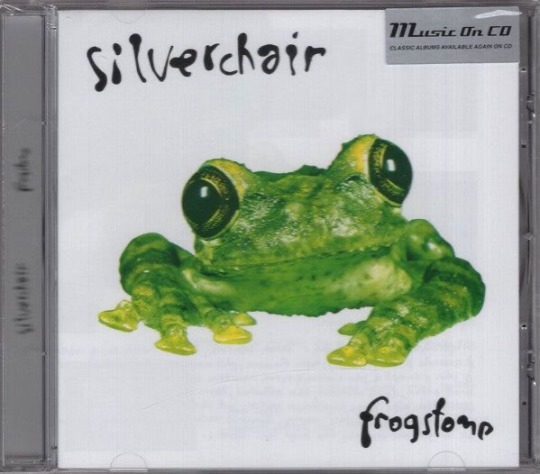




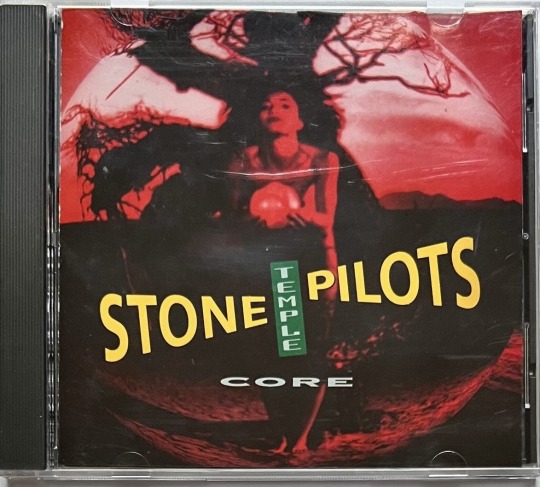
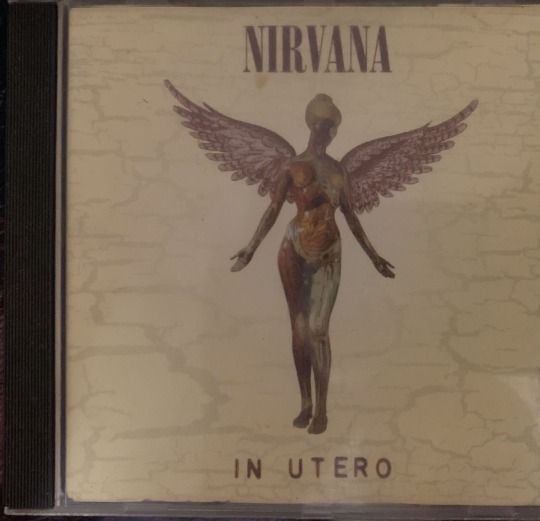
#grunge#90s#music#90s rock#90s grunge#silverchair#daniel johns#90’s music#alice in chains#alternative#hole#hole band#kurt cobain#courtney love#cds#music cds#physical media#compact disc#stone temple pilots#scott weiland#pearl jam#eddie vedder#nirvana#layne staley#soundgarden#chris cornell#mtv unplugged#frogstomp#core#in utero
26 notes
·
View notes
Note
Came across an article about Gavin from last year-Grunge Feb 2023 “The Real Reason Gavin Rossdale isn’t heard from Anymore”. There are some juicy lines in there that drive a stake in the heart of a narcissist like Gavin.
“Stefani continued her work on television, in music, and in fashion, but try as he might, Rossdale could not regain his A-list status.”
“as her career blossomed and his withered”
"Stone Temple Pilots and Bush will both be remembered mostly as wannabes, though their frontmen will be remembered as a guy who took a lot of drugs [STP's Scott Weiland] and Gwen Stefani's husband, respectively." “
“The problem for Rossdale was that his celebrity profile for nearly the length of their marriage was based more in relation to Stefani's successes than his own.”
“The relationship kept him at least close to the spotlight, but once the divorce was final, he no longer mattered much in that context.”
The article ends on a positive note that maybe grunge will make a comeback and he can ride that wave if he courts the fans he has left and continues to find ways to stay visible. But it’s funny how brutally honest they were about his career.
Read More: https://www.grunge.com/125715/the-real-reason-gavin-rossdale-isnt-heard-from-anymore/
STP and Scott had a sort of unique sound though. Whereas, If you took Nirvana and Pearl Jam, took all deep lyrics out and replaced them with a repetitive, meaning word, and hired someone off the street to sing vocals, you’d have Bush. I still believe the talent of the rest of the band held early Bush together. And there is a reason Courtney Love had Kurt ghostwrite her first Hole album and Billy ghostwrite her second Hole album, but never asked Gavin to help her music. I dislike Courtney but she can’t write and can’t sing and she parlayed that into a music career while strung out… she’s not dumb. 😂
Other than the STP disrespect, I agree with everything in the article. If there is a grunge resurgence, GR will be beating down the door to say he did it first (he didn’t).
- B
13 notes
·
View notes
Text
The Primary Principles of Plot: Goal, Antagonist, Conflict, Consequences
A plot is more than a "storyline" or "a series of events," and in order to have a solid plot, it must first have these primary principles: goal, antagonist, conflict, and consequences. Without these things clearly in the story, the plot will always feel weak or even "broken."
Now, with that said, not every likable story has an amazing plot. This is when we turn to what I consider the holy trinity of writing: character, plot, and theme. Generally speaking, for most stories, 99% of what you write should be touching and progressing one of these things, and often, all three. However, not all of them are evenly balanced for every story. For example, no one would say that Forrest Gump is about a thrilling plot that leaves you breathless and your mind spinning. It's mostly about character. Others may lean more heavily on theme (this is often what makes Pixar's stories tug at the heartstrings). And some, like the thriller, very much lean on plot.
Nonetheless, almost any decent story will have at least the primary principles of plot, which I'll be covering today. This is a part of a series where I lay out the primary, secondary, tertiary, and even quaternary principles of what makes a great one.

Where Does Plot Start?
I love Lisa Cron's approach to plot in Story Genius, where she emphasizes time and again that plot is a series of cause and effect events. On a structural level, this is how plot starts--the inciting incident knocks the protagonist off balance, and from there, the story should follow a sense of cause and effect to the climax and resolution--consequences.
But that's not how plot itself starts.
Often people think stories are about conflict. But that's not where plot starts either.
In order for there to be conflict, there must be some kind of antagonistic force. It may not always be the antagonistic force in every scene, but a strong plot will nearly always have some kind of antagonism present. Nonetheless, that's still not actually where plot starts either.
In order for there to be an antagonist, there must be a goal, a want. An antagonist gets in the way of the goal. In a sense, if there is no goal, no desire, then there is no antagonist. So I'm going to echo K. M. Weiland and Ross Hartmann: plot really starts with a want or goal.
This is why I have these principles in this order.
- The protagonist has a want that manifests in a goal.
- Something antagonistic gets in the way of that goal.
- This creates conflict.
- Which leads to significant outcomes--consequences.
Without these things, you don't have a solid basic plot.
You will notice nothing like "inciting incident" or "midpoint" or "climax" are listed. That is because, contrary to what some people say, I feel those things are actually more structural than they are plot. Though that will be explained more when I cover the secondary principles of plot.
In any case, let's start with the beginning of plot, and if you are the type who is already resistant to the concept of your protagonist having a goal, please reserve your judgment until the end. You might be surprised by what you learn. 😉

Your Protagonist Needs a Goal
Everyone wants something, pretty much all of the time. So does your protagonist (even if it's not obvious). Some in the industry feel that the want always needs to be something concrete. I feel that this is a partial truth. The want can be concrete and measurable ("I want to be a lead singer"), but it can also be abstract ("I want to be liked"). In either case, it will manifest in a concrete goal (or even goals). Because, if the character truly wants that, they'll try to get it.
"I want to be a lead singer" will lead to other more specific goals, such as practicing to become a better singer, making it to auditions, trying to be part of a music group. "I want to be liked" can alsolead to more specific goals. In The Office, this is Michael Scott's want and it manifests as a different goal time and again, whether that's organizing a fun run, holding a "motivating" meeting, or trying to get involved in Pam's pregnancy.
One may even consider that the specific want "I want to be a lead singer" has an abstract want behind it, when we ask "Why?" Why does the character want that? The answer might be, "So I can feel important" (abstract).
In any case, we see that the want leads to specific goals that are concrete and therefore measurable. We know when the character succeeds. The first character succeeds when they become a lead singer. Michael Scott succeeds when others like or appreciate the fun run (and by extension him).
Often bigger goals have littler goals inside them, as we see above, which are important when working on a smaller structural level, such as in a scene. The goal in a scene may be to nail a song at an audition or to carbo load for a fun run.
Does your protagonist have to have a goal to have a plot?
Well . . . yes . . . if you want a strong plot. But the goal may not be obvious at first glance. And not all protagonists start the story with a clear goal.
Plus, not all goals are the same type.
Some protagonists have aspirational goals: "I want to be a lead singer." And they may be super motivated and go-getters and will already do whatever it takes to get there! Great. But not all protagonists have aspirational goals.
Sometimes the goal is to stop something. If the antagonist is terrorizing New York, then the goal may be to stop the antagonist.
Sometimes the goal is to keep things the way they are, and when something disrupts that, the character tries to re-establish the equilibrium.
Not all protagonists are innately motivated. A protagonist who is highly driven to reach the goal, will be more likely to act on their own, and act more quickly. A protagonist who is reluctant to act or who appears more characteristically passive, may only act when the stakes (consequences) become too unbearable. They may even drag their feet into the main conflict, but they can't stand by any longer.
Not all protagonists start the story with a strong, overarching goal. Some protagonists already have everything they want or are on course for soon getting everything they want without resistance. All Shrek wants is to live in his swamp alone, and he appears happy that way. Only when that gets taken away, does he have a clear goal: to get it back. Some protagonists have an abstract want, but no vision of how to get it. In Luca, Luca starts off clearly dissatisfied with life, but he has no vision for how to change it until he meets Alberto.
Regardless, the protagonist will usually have a clear goal by the end of the beginning (Act I), which is often what leads to them choosing to engage with the main conflict, which will take us to the middle (Act II).
In some stories, I feel it's actually more accurate to think of the protagonist as having mainly act-level goals. The protagonist may want something specific for Act I, but when the main conflict hits him, he has a new goal for Act II, and at the end of Act II, he realizes he now wants what is needed, not what he was pursuing through the middle, which may lead to a new goal (more or less) for Act III. Furthermore, if your protagonist is more driven by an abstract want, then the concrete goal of how to achieve that may change through the story (probably at an act level) as well.
And even if your protagonist doesn't start with a strong goal, he or she should still have scene-level wants and goals of some sort--even if it's to keep things the way they are already going.
Finally, I want to point out that the goal doesn't always need to be something big and grand. It may be to open a lemonade stand or find something to eat. It nonetheless needs to be significant, which I'll explain in the "consequences" section.Sometimes trying to meet a basic need (like getting food) is just as effective, if not more effective, with the right consequences (the character will starve to death otherwise) (and we all feel great sympathy for those who are starving).
I know I've spent a lot of time talking about goals, but I feel this is where a lot of writers stumble and get confused--in part because there are so many different ways this can actually manifest in the plot.
Goals are critical, not only because they are the starting point of plot, but because they give the audience context for the plot. If there isn't a goal, then the audience can't measure whether what happens is progress or a setback. They are just watching things happen. Or, perhaps as the Cheshire Cat says, if you don't know where you want to go, then which way you go doesn't really matter.
Goals are also useful in that, the more the character wants something, the more you can put them (and by extension, the audience) through h-e-double-hockey-sticks, once they come up against the antagonist.

The Goal Needs an Antagonist
Some say a plot is only as good as its antagonist. This is because the tougher the antagonist, the tougher it is for the protagonist to achieve the goal. A goal without any resistance doesn't make for an interesting story. It makes for a boring one.
The antagonist doesn't have to be a person. It can be a collective, like a society. It can be environmental and natural, like a pandemic. It can be the protagonist's own flaws, competing wants, and failings. It can be technology or the supernatural. It can be the other half, really, of any of the eight types of conflict (which I'll talk about in the next section, for those unfamiliar with them).
The point is, the antagonistic force is a form of opposition. I emphasize "opposition" because the antagonistic force is something in the way of the goal. It's not just something annoying or something heckling the protagonist. What it's trying to do opposes what the protagonist is trying to do. If it's not, you may still get "conflict," but it's not meaningful. For a strong plot, the protagonist's goal and the antagonist's goal can't both be achieved in any foreseeable way (though I may argue, on rare occasions, this can be handled well with a sort of ironic twist).
The antagonist may or may not be specifically targeting the protagonist directly. Sure, it might be very direct, like Voldemort having the goal to kill Harry, and Harry having the goal to defeat Voldemort. Or it may be a step further out, where the protagonist and antagonist both have the same goal, but only one of them can achieve it--such as only one person can come out as the victor in a boxing match. It may be even further out--a massive storm isn't intentionally trying to mess up the protagonist's wedding, but it is. The point is, it's opposing the goal.
In some cases, it may be more helpful to think of the antagonistic force as the resistance or obstacle in the way of the goal. What is stopping the protagonist from simply getting their goal? Their bad singing? Their poor auditioning? The industry saying that people "like you" will never be accepted as a singer? This is true regardless of the kind of goal your character has. If the protagonist is trying to stop something from happening, what is in the way of simply doing that? What do they need to overcome to succeed?
When we take this down to smaller structural units, the antagonistic force may not always be the antagonistic force of the whole story. But it is an antagonistic force for that unit. For example, in a scene, a bully may be in the way of a scene-level goal, but the bully may not be the antagonistic force of the overall story. Just as you may have smaller goals in a story, you will have smaller antagonistic forces. Almost every scene should have an antagonistic force--a form of resistance or an obstacle.
One of the reasons the antagonist is important, is because it tests the protagonist's commitment to the goal, and therefore illustrates how bad the protagonist wants it. The stronger the resistance and the harder the protagonist tries, the more powerful the plot, which leads me to conflict.
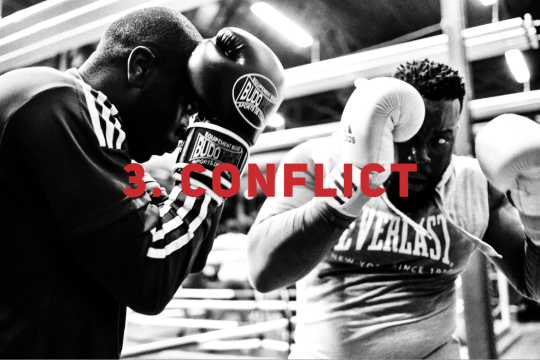
The Goal and The Antagonist Lead to Conflict
In some sense, plot is a battle between goals. The protagonist and antagonist want conflicting things. There isn't a foreseeable way for them each to have their desires. Voldemort can't defeat Harry, and Harry also defeat Voldemort. A character can't have the perfect outdoor wedding on a beach, if a hurricane is coming to said beach. Even if the antagonist can't think for itself, it has its own path, its own "goal" (even if that goal is to stay and exist there, like the jellyfish in Finding Nemo).
This creates conflict. If both boxers want to be victors, they have to fight for the title.
Often, the protagonist may need to reimagine their path forward or even shift the goal. You can't really stop a hurricane, so maybe instead, the wedding will need to be rescheduled or the character will need to come up with how to make a wedding elsewhere as perfect as possible. This creates a setback.
The more the protagonist wants something, and the tougher the antagonist, the bigger the struggle. The protagonist takes action to get the goal, but the antagonistic force keeps getting in the way (whether it's a specific person, society, environment, or what have you). This means the protagonist will become more desperate and take bigger and bigger risks to get it. Likewise, the antagonist's obstacles should get bigger and bigger. Why? Because this is what helps make a strong plot--rising action, escalation. (And because they both really want their goals!)
It also helps create a strong character arc as we watch the protagonist struggling to rise to the occasion. As they take bigger and bigger risks, they reveal how they are staying or remaining the same. We want to use the obstacles and conflict to push and push the protagonist to the point where they are thinking of doing things they wouldn't ordinarily do. This is their opportunity for growth. What will they do?
There are eight types of conflict: person vs. self, person vs. person, person vs. society, person vs. nature, person vs. fate, person vs. God, person vs. technology, and person vs. the supernatural. Though, in some sense, you can argue this is really saying there are eight types of antagonists. Nonetheless, these are your options for creating conflict in smaller structural units, but you have to use good judgment--you probably wouldn't put a supernatural element in a typical romance story. You can learn about the eight types in more depth, should you want.
Meaningful conflict comes from the protagonist facing antagonistic forces in the way of the goal. Technically, you can add all kinds of conflict and still have a terrible plot. In one moment, a bully beats up the protagonist. In another, the protagonist struggles with his own laziness. In another, he is at risk of getting sunburned. In another, he struggles to get his phone to work.
If these conflicts aren't impeding the goal, they are meaningless. They may be interesting for a moment, but they don't really amount to anything, because they don't really change anything. If the conflict doesn't affect a goal or have stakes and ramifications, then it's just cleverly disguised filler--because it doesn't carry any real consequences.
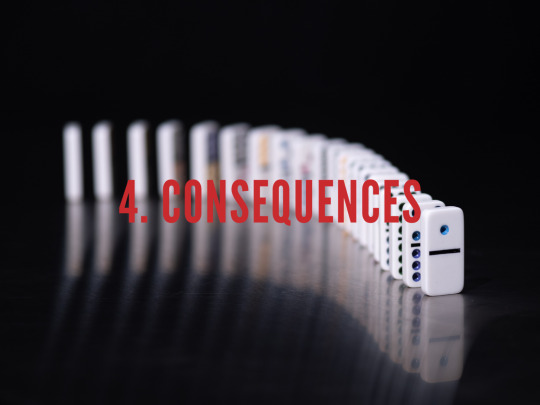
Conflict Leads to Consequences
Conflict only matters in that it changes outcomes. If there is conflict and nothing changes, then what's the point? (This only works on rare occasions where the point is to show a lack of change (in which case, it's usually best left brief or summarized).)
This is where cause and effect come in. Plot isn't just random things happening. It follows a sense of cause and effect. Even stories that appear to be about random things happening, will usually follow cause and effect--it's just that the effect is mostly internal, aimed straight at the character arc.
In most stories, the effect will be both internal and external.
Your protagonist and antagonist are engaged in battle. Great. What is the outcome of that? And why does it matter?
This is where we get to stakes. Stakes are what is at risk in the story--what the character has to lose. But I like to think of them as potential consequences. This means they should be able to fit into an "If . . . then . . ." statement, even if they don't appear that way on the page. "If Quirrel gets the Sorcerer's Stone, then Voldemort will return to power." "If Frodo gets overtaken by Ringwraiths, then the Ring will fall into Sauron's forces." "If I learn to sing this perfectly, then I'll nail my audition."
Conflict only matters in that it affects how the protagonist or world will move forward (or not move forward). Stakes project the sense of cause and effect forward, which gives what happens, meaning. It also gives the plot more cohesion.
Michael Scott thinks if he can make this fun run work, then he can redeem himself for accidentally hitting Meredith with his car (which led to people, including Meredith, disliking him more). If it's a failure, he'll be even more hated and lonely (and he fears that above all else.)
Stakes make the goal, antagonist, and conflict significant. The goal may be something as simple as starting a lemonade stand. How important is a lemonade stand in the grand scheme of things? Not very important. But when it has a bunch of consequences tied to its success, it can become very. When a lemonade stand is the only way for a little girl to raise enough money to pay for her beloved pet's surgery, it becomes pivotal. When said pet is an emotional therapy animal, and without the surgery, the pet could die, making sure the lemonade stand is a success becomes critical. Now a simple goal that may have seemingly simple obstacles, matters a lot. Because of the consequences. The cause and effect.
The stakes don't necessarily need to be, literally, life or death, but they need to be important enough that they could shift the protagonist's world from one path to another. The outcome doesn't just change that one moment, it changes a trajectory. Michael Scott will be on the trajectory of hatred and loneliness if the fun run fails. If the pet dies, the girl's life won't be the same after. In a sense, you could say it's a figurative "life or death" because one path is then traveled over the other ("life vs. death").
The audience wants to know why this plot matters. They want the stakes on the page. Why should they care? Project forward the sense of cause and effect, and you'll be much closer to hooking and reeling them in.
Stakes also play into motive. Why is the protagonist taking this path? This action? Because she believes it will result in a desirable outcome. She believes it will lead to some kind of success.
Now, with all that said, not all outcomes in a plot are foreseen. Sometimes the outcome of a conflict ends up being something totally different than expected--in fact, this surprise is also great at reeling in the audience. They wonder, What will little Suzy do now? This is why I called this section "consequences" and not "stakes." Even unforeseen consequences change plot. And strengthen plot. By definition, the term "stakes" is used for things at "risk." But not everything at risk actually ends up a reality.
For the sake of this series, think of it like this:
Stakes = potential consequences (projecting cause and effect into the future)
Ramifications = actual consequences
This is sorta like the difference between "tension" and "conflict." Tension is the potential for conflict, while conflict is the actual "fight."
You can even use stakes to set up the audience's expectations, and then deliver ramifications that are unexpected. The protagonist gets the goal, but it actually leads to his destruction, for example. Just be careful that you aren't being "surprising" by de-escalating, instead of escalating, or it will feel like the story is full of empty threats. Deliver something equally powerful, or more powerful, than expected, if you are going to go that route.
Just as there should always be more tension than conflict in a story, there should always be more stakes than actual ramifications. This is because there are a lot of cause-and-effect potentials, but only so many actual outcomes--you can't travel down two paths going opposite directions at the same time. This also means you will need to brainstorm more consequences than the plot will actually follow.
Admittedly, sometimes not being able to see where something is leading and going, or even understanding what a goal is, is interesting too, like a bit of mystery with a sense of uncertainty, when done well, but this is an exception, not a rule of thumb, and should only be used sparingly and kept brief. It might be intriguing for a while, but it won't be enough to sustain a proper plot for a whole book, or even a whole act.
Likewise, you can sometimes make some tricky choices to create a twist, but twists will be for another day.
After all, these are the primary principles of plot. There is still plenty more to cover. However, if your story is missing one of these, it's pretty much a guarantee the plot will feel weak. If you want a strong one, these are a must.
Later I'll be back with the secondary principles of plot.
Get plotting!
86 notes
·
View notes
Text
BIPOC PEOPLE IN THE ROCK MUSIC INDUSTRY
Post inspired by, and is an extension of this lovely post about POC emo icons by @rpf-bat. If I get anything wrong, please feel free to correct me. I’m going to try to keep the bios relatively short and sweet so I don’t write an entire essay. All my information was found from Google/Spotify search results or my pre-existing knowledge. Feel free to DM me for specific sources. Fair Use for educational purposes, no copywright infringement intended.
Acrassicauda: Iraqi metal band from Baghdad. Andy Capper and Gabi Sifre wrote Heavy Metal in Baghdad: The Story of Acrassicauda about the band’s formation and their fight to be able to play the music they love.

Booboo Stewart (Vic Lakota from The Relentless in Paradise City and American Satan, Seth Clearwater from The Twilight Saga: Eclipse, Jay from Disney’s Descendants, among many others): Blackfoot, Korean, Chinese, and Japanese.

Tom Morello (Rage Against The Machine, Audioslave, The Nightwatchman): biracial- Kenyan and white (quick side note: Morello has a bachelor’s degree in political science from Harvard, which I thought was really cool).

The HU: Mongolian metal band. They’ve worked with the likes of Jacoby Shaddix of Papa Roach (The Wolf’s Totem), Lzzy Hale of Halestorm (Song of Women), and Danny Case of From Ashes to New (Yuve Yuve Yu).

Jose “The Metal Ambassador” Mangin (radio personality/host and interviewer, Sirius XM): Mexican-American. Is often hosting on Sirius XM Octane and Liquid Metal.

Meet Me @ The Altar: Pop punk trio made up entirely of BIPOC musicians Edith Johnson (Black), Téa Campbell (Black), and Ada Juarez (Latinx). Three of their popular songs are Hit Like a Girl, Feel a Thing, and Garden.
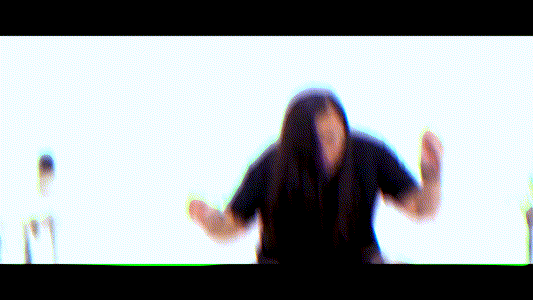
Nandi Bushell: Zulu and white. The twelve year-old drummer has collaborated with Roman Morello, Tom Morello, Jack Black, and Greta Thunberg on Roman’s song The Children Will Rise Up! She has also played with the likes of Dave Grohl of Foo Fighters, Roger Taylor of Queen, Ringo Starr of The Beatles, and Matt Helders of The Arctic Monkeys (and likely more that I’m missing).

Joe Hahn (Linkin Park, Mr. Hahn): Korean-American. The man behind the band’s turntables and keyboard. Linkin Park’s Cure for The Itch on their album Hybrid Theory (2000) specifically highlights Hahn on the turntables within the first minute.

Ayron Jones: African-American. Jones is gaining traction in the scene. Two songs of his I’d like to note are Spinning Circles and Mercy from his 2021 album Child of the State. He has toured with the likes of Shinedown (and makes a hilarious feature in one of the band’s Tiktoks) and will tour with The Pretty Reckless and Black Stone Cherry this year.

BIPOC ICONS
Chuck Berry (The Chuck Berry Trio, Sir John’s Trio) Black. Widely successful, influential singer and guitarist known for Johnny B. Goode, You Can Never Tell, and No Particular Place To Go. Berry’s legacy is still deeply felt in his contemporaries today.
Prince (Prince and The Revolution, “The Artist Formerly Known as Prince,” 3rdeyegirl, Madhouse, 94 East, The Family) Black. Groundbreaking, inventive, and androgynous artist known for hits like When Doves Cry and Purple Rain. Prince has also written songs for others like Sinead O’Connor (Nothing Compares 2 U) and The Bangles (Manic Monday).
Jimi Hendrix (The Jimi Hendrix Experience, Band of Gypsys, Kings of Rhythm, Jimmy James and The Blue Frames): Black and Cherokee. Acknowledged by many to be one of the greatest (if not the greatest) guitarists of all time.
Slash (Guns N’ Roses, Velvet Revolver, Spinal Tap, Road Crew, and entirely too many others to list): biracial- Nigerian and white. He’s the guitarist for Guns N Roses, whose hits include (but are not limited to) Welcome to The Jungle and Sweet Child O’ Mine. He joined his bandmates of Guns N’ Roses Duff McKagan and Matt Sorum in the early 2000s to form Velvet Revolver, recruiting Scott Weiland of Stone Temple Pilots for vocals. He continues to release music, especially with Myles Kennedy of Myles Kennedy and the Conspirators and Alter Bridge (see Driving Rain).
Robert Trujilo (Metallica, Suicidal Tendencies, Mass Mental, Infectious Grooves): Mexican and unspecified Native American descent. Trujilo replaced Jason Newsted as guitarist for Metallica, starting as a full time recording member with St. Anger (2003).
Carlos Santana (Santana): Mexican-born Latinx. A legendary guitarist, Santana’s song Smooth featuring Matchbox Twenty’s Rob Thomas is still an incredibly popular hit to this day. A prolific part of the song is Santana’s guitar work at the beginning of and throughout the song. The riff is considered to rather iconic to rock music as a genre.
Freddie Mercury (Queen): Indian Parsi, born in Zanzibar. Mercury is also considered to be an LGBTQIA+ icon by many. He was a groundbreaking and charismatic performer (not to mention his prolific appearance and fashion). His absolute powerhouse of a voice behind Queen’s innumerable hits like Bohemian Rhapsody, We Will Rock You, and We Are The Champions earned Mercury a deity-like status in both the music industry and pop culture as a whole. He continues to influence and inspire many in the decades since his death.
To all my BIPOC beauties/handsome people:
You exist in this industry. You belong. Do not let anyone in this scene erase or invalidate you.
#rock and roll#rock music#bipoc#bipoc representation#bipocartists#modern rock#metal#hard rock#queen#freddie mercury#carlos santana#santana#metallica#guns n roses#jimi hendrix#chuck berry#ayron jones#linkin park#nandi bushell#meet me at the altar#the HU#sirius xm#tom morello#rage against the machine#audioslave#american satan#paradise city#acrassicauda#poc#people of color
73 notes
·
View notes
Text
... AND THE BEST HAIR AWARD GOES TO:
Pearl Jam: Mike McCready
Soundgarden: Chris Cornell
Alice in Chains: Jerry Cantrell
Nirvana: Dave Grohl
Stone Temple Pilots: Scott Weiland's red hair
Mother Love Bone: Stone Gossard
Temple of the Dog: ... oh fuck
28 notes
·
View notes